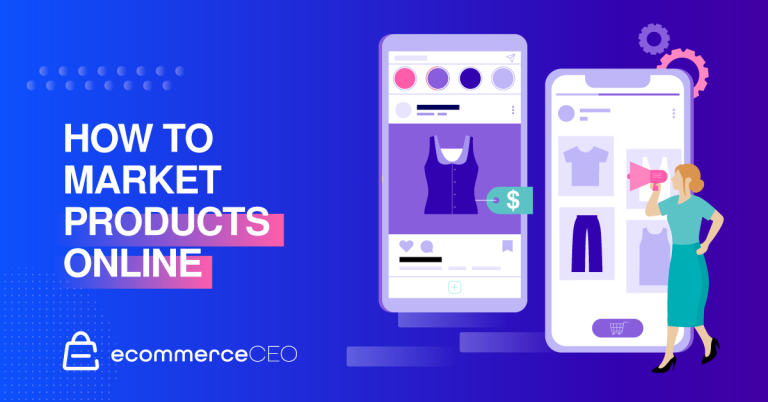
- Posted on
- • February 14, 2020
- Ecommerce 101

Looking to start your own ecommerce business?
With online sales in the U.S. projected to grow to $600 billion by 2024, the world of ecommerce offers a goldmine of opportunities for ambitious sellers and entrepreneurs. However, the process of starting an ecommerce store isn’t always as straightforward as it sounds.
In this article, we provide a focused six-step roadmap for how to start an ecommerce business, with pointers for creating an online site that competes, drives sales, and generates profit.
1. Choosing the Most Profitable Products
The products you choose to sell can make or break your ecommerce business. Many online merchants choose to sell either popular commoditized items (like fashion and apparel), trending products (like CBD), or a combination of both to maximize their online returns.
Some of the most successful products are those that solve a problem, appeal to human emotions, and can be crafted into a brand story. Products that you’ll be able to promote with your unique positioning and site experience will allow you to differentiate your business from the competition.

2. Zeroing In on the Right Niche
Having a defined value proposition and product differentiator can help your business stand out from the competition. Consider finding a niche for your products that has a healthy level of competition but is not dominated by giant brands. This allows you to capitalize on demand while providing room for you to carve out your distinct position.
Once you’ve selected your products and determined your market, you must also select the right business model, whether it’s direct to customer, wholesale ecommerce, subscription service or a combination of models.
3. Branding: Starting an Ecommerce Business Off Right
Consistent branding across a business’ platforms has been shown to increase revenue by as much as 23 percent. The takeaway? Your brand not only sets the tone for what shoppers can expect from you, but also helps inform how you will shape your online experience.
While there is no perfect, one-size-fits-all approach to building a successful ecommerce brand, you’ll want to focus on consistent branding across your business’ communications and consider how your unique value proposition and messaging will be conveyed online.
4. Setting Up an Ecommerce Website That Works for You
Your website serves as the face of your ecommerce business—it shapes your customer’s first impressions, directs their journey with your brand, and is often used as the deciding factor for whether or not shoppers engage with your brand.
As the online space becomes more saturated, it’ll take more than a functional ecommerce site to succeed. To meet the expectations of modern consumers, your site must deliver a top-notch experience, communicate a clear brand, and offer something of value. Things like your product merchandising, site design, checkout process, and overall brand experience help your site to both measure up against the competition and set your business apart.
5. Launching and Marketing Your Online Store
The phrase “if you build it, they will come” doesn’t hold true in ecommerce. A competitive ecommerce business is nothing without quality traffic and an engaged customer base. Once your site is up and running, you’ll want to establish channels for both acquiring visitors and retaining them as loyal customers.
Social media, paid online ads, organic search, and affiliate marketing are all channels you can use to increase publicity for your ecommerce store, while engaging email campaigns and high-quality content marketing help to attract, nurture, and build loyalty with website visitors.
6. Optimizing Your Ecommerce Business Post-Launch
Launching your ecommerce store is just the beginning. Once you’ve secured a steady stream of sales, you’ll want to optimize how customers arrive at and engage with your site.
On average, 76 percent of website visitors exit a site without completing their purchase. Improve aspects of your online experience (like its speed, performance, navigation, customer support, and page layouts) to help build trust, remove purchase friction, and increase customer satisfaction. These components work together to encourage purchase completion and increase average order value.
How to Succeed, Grow, and Scale in Ecommerce
As more and more visitors come to your site, you’ll soon consider ways to expand your ecommerce business in order to keep up with customer demand and further generate sales.
Keep an eye on performance metrics like customer lifetime value, average order value, and cart abandonment rate and you’ll be able to hone in on the features, functionalities, and offerings you need to provide in order to scale your business.
Starting an ecommerce business is both an exciting and challenging endeavor. Careful planning is required to take your business from idea to launch as you learn how to sell products, build an attractive site to showcase these products, and establish profitable relationships with customers. As online sales continue to rise, a competitive ecommerce business can offer remarkable success.







